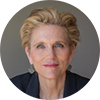Download PDF

David Lawrence Sackett, MD, was my kind of guy: He loved trout, Border collies, and reading—and he asked too many questions.
As a fourth-year medical student at the University of Illinois, Sackett was treating a teenager for hepatitis. The standard treatment was bed rest until the enlarged liver returned to a normal size. But the restless teenager was probably driving everyone crazy, and Sackett wondered about the evidence for imposing immobility. He scoured the U.S. Armed Forces Medical Library and found a study that randomized soldiers with hepatitis to rest or to normal activity. The outcomes were identical. He liberated his adolescent patient from imposed bed rest and launched a career in clinical epidemiology, a term he coined. Today, Sackett is known as “the father of evidence-based medicine.”
Evidence-based medicine is a phrase we toss around with ease, but understanding what it means is illuminated by considering the phrase eminence-based medicine. Traditionally, medical decision-making was rooted in eminence-based medicine, which relied on the opinion of a prominent, seasoned physician. It depended on the clinical experience, advice, and opinions of our mentors, who we now call key opinion leaders (a term that should be retired because it reflects eminence-based thinking). Eminence-based decision-making has value, but it is flawed and limited. One cynic described clinical experience as “making the same mistakes with increasing confidence over an impressive number of years.”1
For those of us who have practiced ophthalmology for decades, much of our training was rooted in eminence-based decision-making, even as evidence was emerging. I recall the buzz when the Diabetic Retinopathy Vitrectomy Study confirmed that early vitrectomy had better visual outcomes than conventional management for patients with severe vitreous hemorrhage secondary to diabetic retinopathy. But I also remember the words of Robert N. Shaffer, MD, one of our early eminent glaucoma specialists, who noted that most patients with intraocular pressures greater than 30 mm Hg eventually develop glaucomatous damage. Long before the randomized clinical trials of OHTS and EGPS even began, his comment was based in clinical experience, not in evidence, and he was mostly accurate.
Our emphasis on evidence-based medicine is described by 1 author as a shift from “trust in the experts” to “trust in the numbers.”2 However, Sackett recognized that both are necessary. In a 1996 editorial, he noted that overreliance on evidence can result in an inappropriate application, whereas overreliance on clinical expertise can result in out-of-date or detrimental care.3 He identified the best approach as “integrating individual clinical expertise with the best available external clinical evidence from systematic research.”
What, then, is evidence-based medicine? It is a process that coordinates conscientious and judicious use of modern, best evidence in making decisions about the care of an individual patient. Early critics of evidence-based medicine would find this definition disarming because it obviates cookbook medicine and ivory tower decrees. Evidence-based decisions marry the ancient art of medicine with the data-rich science of the modern age.
Sackett could not have foreseen this era of big data and how it will transform our clinical decision-making. Yet, the principles he elucidated—the integration of clinical expertise with scientific evidence—are more important than ever. The IRIS Registry, artificial intelligence, and image analysis will help us ask and answer clinical questions more efficiently. And, increasingly, we will have point-of-care tools that help us navigate the emerging and abundant evidence. Finally—and most importantly—the role of the physician will be enhanced, not diminished, as evidence and data grow.
___________________________
1 O’Donnell M. A Skeptic’s Medical Dictionary. London: BMJ Books, 1997.
2 Bolt TC, Huisman FG. Ned Tijdschr Geneeskd. 2015;159:A9297.
3 Sackett DL et al. BMJ. 1996:312(7023):71-72.